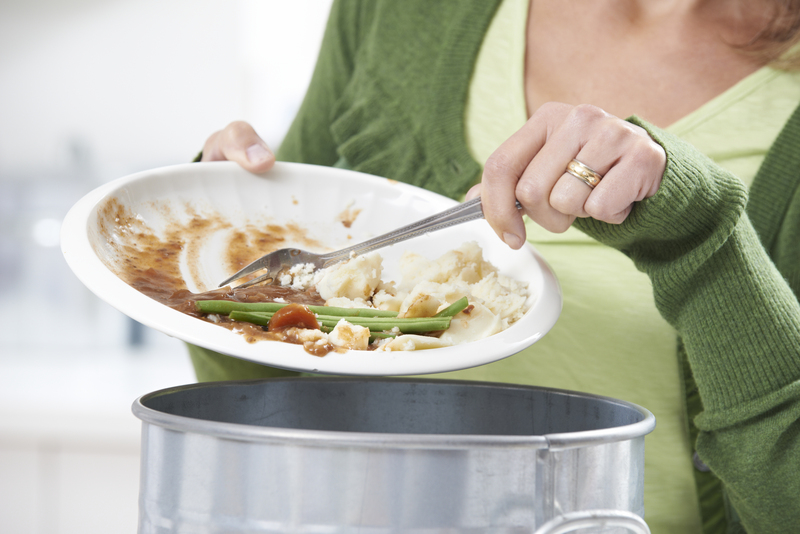Best Practices for PPE Disposal at Schools and Offices
The recent years have seen a marked increase in the use of personal protective equipment (PPE) in both educational and occupational environments. As schools and offices strive to keep their communities safe, the need for effective PPE disposal methods becomes increasingly essential. Proper disposal of PPE not only prevents the spread of infections but also protects the environment from pollution and misuse. In this comprehensive article, we'll uncover the most effective best practices for PPE disposal in schools and offices, ensuring health, safety, and environmental stewardship.
Understanding the Importance of PPE Disposal in Educational and Professional Settings
Personal Protective Equipment includes items like masks, gloves, face shields, and gowns. These tools have become integral in protecting staff, students, and employees from pathogens, especially during pandemics and outbreaks. However, the increased use translates to growing waste streams.
- Improper disposal of PPE can lead to workplace and classroom contamination.
- Careless disposal increases environmental risks, especially with plastics and synthetic materials.
- Poorly managed PPE waste may endanger janitorial and custodial staff.
Why is PPE disposal crucial? First, because wasted PPE can become a vector for diseases. Second, synthetic materials used in masks and gloves can harm wildlife and ecosystems if they are not disposed of correctly.

Common Types of PPE Used in Schools and Offices
To properly manage PPE disposal in offices and schools, it's important to recognize the common types of PPE:
- Face masks - Both disposable and reusable types.
- Gloves - Usually nitrile, vinyl, or latex, predominantly single-use.
- Face shields and goggles
- Protective gowns or coveralls
- Disinfectant wipes and tissues used in conjunction with PPE
Regulatory Guidelines for School and Office PPE Waste
Adhering to local, state, and federal guidelines is critical. Organizations such as the Centers for Disease Control and Prevention (CDC) and the Occupational Safety and Health Administration (OSHA) provide the following main recommendations:
- Employ designated PPE waste bins and regular collection protocols.
- Use containers marked specifically for "PPE Only" waste.
- Ensure safe handling and storage to avoid human contact and cross-contamination.
Setting Up Effective PPE Disposal Systems in Schools & Offices
1. Placement of Dedicated PPE Disposal Bins
Positioning clearly-labeled PPE waste bins or bags at key points is vital. Areas to consider include:
- Building entrances and exits
- Near restrooms
- Classroom and office entryways
- Break rooms and cafeterias
*Tip:* Use touchless bins to reduce the risk of contamination.
2. Clear Signage and Instructions
Post easy-to-read instructions near disposal stations outlining:
- What is considered PPE waste (e.g., masks, gloves, wipes)
- How to safely remove and discard used PPE
- Why proper PPE disposal matters
Signs should feature bold graphics and multiple languages if necessary to ensure all users understand and comply.
3. Choosing Approved Waste Bins and Liners
Select bins that are resistant to leaks and punctures. Use heavy-duty liners within bins to avoid spills. Containers should be:
- Non-transparent red or yellow to signal hazardous waste
- Easily cleaned and sanitized on a daily basis
- Marked with PPE Disposal Only
Step-by-Step PPE Disposal Procedure
- Safely remove PPE: Before disposal, ensure hands are clean. Remove PPE in the correct order (gloves, then masks), avoiding contact with the front of the mask or outside of gloves.
- Discard in dedicated bins: Immediately drop used items into the PPE disposal bin without touching the outside.
- Sanitize hands: Wash hands or use sanitizer immediately after disposing of any PPE.
- Regular bin replacement: Custodial staff should replace PPE waste liners frequently, ideally before bins become full.
- Safe transport and storage: Bags should be sealed tightly prior to moving. Storage must be in a secure, isolated area until final off-site disposal.
Training and Communication
Effective PPE waste management depends on knowledgeable users:
- Conduct regular training sessions for staff, students, and employees on PPE use and disposal.
- Use posters, emails, and intranet notifications as reminders.
- Encourage a culture of responsibility and environmental awareness.
Environmental Impact: Sustainable PPE Disposal Practices
While health and hygiene take priority, the sheer quantity of single-use PPE has sparked growing environmental concerns. Schools and offices can balance safety with sustainability by:
- Choosing biodegradable or recyclable PPE options where feasible
- Setting up collection points for reusable fabric masks (to be cleaned and redistributed)
- Encouraging the use of reusable PPE where risk is minimal
- Partnering with certified waste management companies
Never flush PPE down toilets--this causes plumbing blockages and pollutes waterways.
Outsourcing PPE Waste Disposal: When and Why?
For larger institutions and office complexes, professional PPE disposal services are essential. These providers follow strict health and environmental regulations to ensure safe and compliant disposal.
- Choose companies with proven experience in handling medical or hazardous waste
- Verify licensing, insurance, and compliance with governmental standards
- Request documentation (waste manifests) for traceability
Benefits of Outsourcing:
- Reduces liability for the school or business
- Ensures proper transport, treatment, and disposal at regulated facilities
- Frees internal staff to focus on core tasks
Troubleshooting Common PPE Disposal Mistakes
Even with strong systems, errors can occur. Watch for these pitfalls:
- Using regular trash bins for PPE waste
- Overfilling disposal bins, risking overflow and exposure
- Failing to seal liners or bags prior to collection
- Insufficient hand hygiene before and after PPE handling
Regular audits and spot checks are helpful to identify and correct such issues.
Legal Compliance and Occupational Safety Standards
In many jurisdictions, PPE waste from medical or suspected-contaminated sources is classified as regulated medical waste. Schools and offices must:
- Adhere to local waste management laws and keep up-to-date on any regulation changes
- Maintain documentation of disposal practices for inspections
- Train custodial and facilities staff on OSHA guidelines and the CDC's latest recommendations
Raising Awareness: Building a Safe and Responsible Community
Ultimately, safe PPE disposal is a collective responsibility. School leaders and office managers play an essential role in fostering a culture of:
- Personal accountability: Encouraging everyone to dispose of their PPE correctly
- Safety leadership: Setting an example through regular checks and feedback
- Community education: Sharing facts about both infection prevention and environmental protection

Frequently Asked Questions about PPE Disposal in Offices and Schools
How often should PPE disposal bins be emptied?
At a minimum, bins should be checked daily and replaced before they are full. High-traffic areas may require multiple collections per day.
Can PPE waste be recycled?
While most single-use PPE (like masks and gloves) isn't suitable for traditional recycling, some specialist programs can recycle certain items. Always consult with waste contractors to explore viable options.
What should I do if regular trash bins are mistakenly used for PPE?
Treat the entire contents as potential infectious waste and follow PPE waste removal protocols immediately. Inform and retrain staff to prevent recurrence.
Conclusion: Putting PPE Disposal Best Practices into Action
Implementing the best PPE disposal practices for schools and offices is essential for safeguarding health, supporting environmental sustainability, and maintaining compliance. From strategic placement of labeled bins to training programs and collaboration with professional waste services, each step plays a role in building a safer future.
By staying informed, following clear protocols, and prioritizing both safety and the environment, educational and business communities can turn PPE disposal from a challenge into an opportunity for leadership and care.
Let's protect our schools, offices, and our planet by committing to responsible PPE disposal every day.
